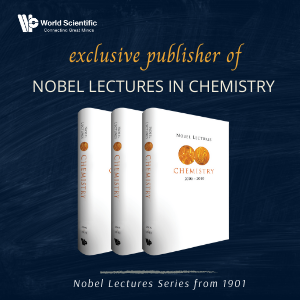System Upgrade on Tue, May 28th, 2024 at 2am (EDT)
Existing users will be able to log into the site and access content. However, E-commerce and registration of new users may not be available for up to 12 hours.For online purchase, please visit us again. Contact us at customercare@wspc.com for any enquiries.
The field of chemical reaction dynamics has made tremendous progress during the last decade or so. This is due largely to the development of many new, state-of-the-art experimental and theoretical techniques during that period. It is beneficial to present these advances, both theoretical and experimental, in a review volume published in two parts (Parts I and II). The primary purpose of this review volume is to provide graduate students and experts in the field with a rather detailed picture of the current status of advanced experimental and theoretical research in chemical reaction dynamics. All chapters in these two parts have been written by world-renowned experts active in such research.
Sample Chapter(s)
Chapter 1.1: Introduction (91 KB)
Chapter 1.2: Improved Universal Molecular Beam Technique Based on Electron Impact Ionization (838 KB)
Chapter 1.3: VUV Synchrotron Radiation Based Molecular Beam Apparatus at SRRC (218 KB)
Chapter 1.4: Future Outlook (63 KB)
Chapter 1.5: Concluding Remarks (79 KB)
Contents:
- Multiple Channel Reaction Dynamics Using Universal Crossed Molecular Beam Techniques (X-M Yang)
- Ion Imaging Applied to the Study of Chemical Dynamics (D W Chandler & J I Cline)
- The Dynamics of Hydrogen Atom Abstraction from Polyatomic Molecules (X-H Liu & A G Suits)
- Ab Initio Potential Energy Surfaces of Large Reaction Systems (A M Mebel)
- Theoretical Dynamics Treatment of Chemical Reactions (J Z H Zhang et al.)
- Quasiclassical Trajectory Studies of Four-Atom Reactions (D Troya et al.)
- Recent Developments in Statistical Rate Theory for Unimolecular and Complex-Forming Reactions (S C Smith)
- Non-Born-Oppenheimer Chemistry: Potential Surfaces, Couplings, and Dynamics (A W Jasper et al.)
- Semiclassical Theory of Nonadiabatic Transition and Tunneling (C-Y Zhu)
- Transition State Spectroscopy (D M Neumark)
- Coincidence Imaging Techniques (R E Continetti & C C Hayden)
- Time-Resolved Photoelectron Spectroscopy and Imaging (T Suzuki)
- Manipulating Cold Molecules with Nonresonant Fields (B Friedrich)
Readership: Undergraduate and graduate students in chemistry as well as atomic and molecular physics; researchers in physical chemistry.



























